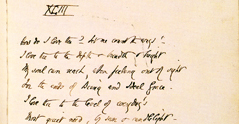THE FIRST WORLD WAR: A DOCUMENTARY RECORD
Series One: European War 1914-1919, the War Reserve Collection
from Cambridge University Library
Part 5: The Royal Army Medical Corps, Red Cross and other Auxiliary Services
This is a major microfilm series making available the riches of the War Reserve Collection at Cambridge University Library. The collection is widely recognised to be one of the finest sources of documentation concerning the First World War in the world.
Francis Jenkinson, University Librarian, started to build the collection in 1915 by writing to men on every front, to those organising the auxiliary forces and supervising the production of munitions, to embassies at home and abroad, and to English exiles and to sympathetic neutrals. As a result he gathered a wealth of rare and ephemeral publications (including unique copies of trench journals, souvenir issues produced by ambulance units, recruiting fliers, and photographs of women’s work during the war) which capture the immediacy of the war. The collection has been added to ever since and continues to grow today. With the guidance of Professor Jay Winter, Department of History, Columbia University, New York (Consultant Editor) we are making available many of the rarest and most interesting materials from the collection on a thematic basis.
This fifth part deals with the activities of the auxiliary services during the war. These range from field ambulances and military hospitals, through concert parties and famine relief organisations, to the work of munitions factories and railway interests in the war. There is even a work documenting the role of pigeons in the war. Some of the particular groups dealt with are The Red Cross (American, British & Canadian Divisions); The Royal Army Medical Corps; the American Poets Ambulances in Italy; the Friends Ambulance Unit; Princess Louise Scottish Hospital, Glasgow; The Anglo-French-American Hospital at Neuilly-sur-Seine; the New Zealand Medical Service; The Indian Military Hospital at the Royal Pavilion, Brighton; the French Relief Fund; the Commission for the Relief of Belgium; the National Food Fund; and the YMCA. These sources will deepen our understanding of the substantial and very valuable work performed by these services during the war and will open up many new avenues for research. Part 5 contains more than 600 individual booklets, souvenirs, magazines, manuscript letters and other items. It includes: - Records of Railway Interests in the War. (including Ambulance trains, GW Railway Hospital, ships etc), London 1914-1917
- Tatham, M. The Friends Ambulance Unit, 1914-19, London [1920]
- Leng, W St. Q. SSA 10. Notes on the work of a British Volunteer
Ambulance Company with the 2nd French Army, Sheffield 1918
- Notes of the employment of women on munitions of war, London 1916
- Hayes, Middlesex. A short history of National Filling Factory No 7, Hayes [1918]
- American Poets Ambulances in Italy, [New York] 1918
- Tales of a field ambulance (privately printed), Southend-on-Sea 1935
- Carbery, A D - New Zealand Medical Service, Auckland 1924
- Edington, G H With the 1st Lowland FA in Gallipoli, Glasgow 1920
- Kraus A. L’ospedale de Guerra della republica di San Marino, San Marino
- Wounded by Arnold Bennett, Wheton 1915
- The War Work of the Auxiliary Hospitals, Kendal 1921
- The Birth: Early days of our ambulance trains in France, London 1921
- The American Women’s War relief fund. Report of work, London 1915
- Lord, J R. The Story of the Italian War Hospital, London 1910
"The First World War was the world-changing event of this century. With all that has been written about it, large areas need to be enriched and deepened by access to a wider range of material. The War Reserve Collection at Cambridge University Library contains many unfamiliar and unusual documents. Once it becomes widely available, it will provide one basis for scholarly and popular studies of topics such as the trench experience, the role of the auxiliary services, and the propaganda campagns of the two sides...."
Professor Trevor Wilson
Department of History, University of Adelaide
|















